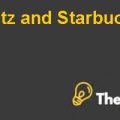
INITIAL PUBLIC OFFERING Case Solution
Difference between Initial Public Offering and Additional Shares Issue
When the owners of a privately managed company decide to list the company on a stock exchange in order to raise the required capital by offering the new stock of shares to the public for the first time, it is called as Initial Public Offering or Primary Offering (Booth and Smith 1986). On the other hand, additional share issue, which is also called as follow up public offering or seasoned issue, is basically the issuance of additional shares to the public by a company which is already listed.Companies usually go for seasoned issue for either raising the required capital to fuel the growth or refinancing their current operations.
The basic difference between initial public offering and the follow up public offering is that a follow up public offering can only be given if there is an initial public offering whereas, this is not the case with initial public offering. Another important difference is that initial public offerings are more profitable as compared to follow up public offerings and the reason for this is that the main purpose of companies for going for an IPO is that the company wants to compile money whereas, the FPO is used to add to the initial public offerings of the company (Graham and Harvey 2001). The follow up public offering is the second sale whereas the initial public offering is the first sale of the businesses that are seeking for expansion.
Regarding the risk factor, the IPOs are more risky investments as compared to FPOs and the reason for this is that the business or the company as well as the investor are not able to predict what would happen in the coming days to the initial trading but in the case of the FPOs the investors are well aware about the future growth prospects and the idea of the investment (Ang&Brau 2003. Moreover, initial public offering is also considered as a transitory period of growth so there is high uncertainty and risk associated with the future of the business. These all are the main differences between the initial public offering and issuing additional shares to the public after getting listed.
Higher Costs for IPO
Due to the above factors and the high risk which is inherent in an initial public offering the costs associated with an IPO are also higher. These costs are determined with regard to a range of the variables which impacts upon the scope and the magnitude of the IPOs (Barry,Muscarella&Vetsuypens 1991). Some of the main factors which have a significant impact on an IPO’s cost are as follows:
- There are long term costs associated with an IPO such as the costs of developing investor relations, external reporting and human resource functions.
- The direct costs are also significant such as the costs associated with financial reporting advisor, legal advisor, external auditor and the underwriter fees.
- There are also costs associated with the institution of the incentive plans for the employees and executives of the company.
All the above differences, which have been highlighted between an IPO and the issuance of additional shares by a listed company, are actually the main reasons for the higher costs of the IPO. As the company is going to get listed on a regulated exchange therefore, it needs to comply with the rules and regulations (Ritter 1987).................
This is just a sample partial case solution. Please place the order on the website to order your own originally done case solution.












